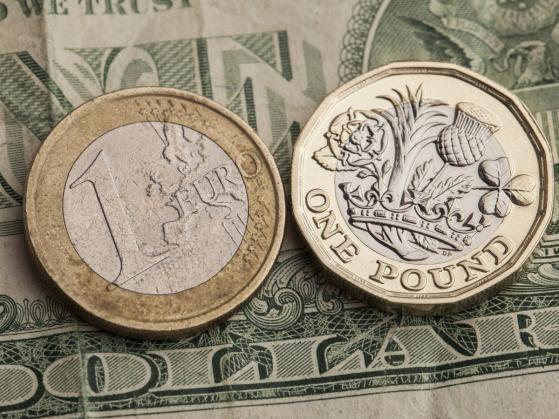ExchangeRates.org.uk - Risk conditions were significantly more fragile during Tuesday with equities moving lower amid reservations surrounding the global growth outlook. Scotiabank commented; “USD short-covering is the primary motivation behind USD gains, although the risk backdrop does look soft today amid broad losses in global stocks.”
The Pound remains closely correlated with global risk conditions and the currency was hurt by less confident conditions even though confidence in the UK economy remained firm. The Pound to Dollar (GBP/USD) exchange rate was unable to break above 1.3150 and retreated to 1.3100 after the US data.
According to Scotiabank; “GBP gains above 1.3160 may drive some short-term gains while a push under 1.3120 will likely drive a little more weakness towards the 1.2950/1.3050 range.”
The Pound to Euro (GBP/EUR) exchange rate failed to hit 1.1900 and retreated to near 1.1860.
Markets are watching US economic data closely given the impact on interest rate expectations. Relatively soft US data would reinforce expectations of lower interest rates and weaken the dollar. There would, however, be the risk of a shifting dynamic if the data was very weak. Recession fears would intensify and risk appetite would also be more vulnerable, potentially triggering dollar gains.
MUFG commented; “If incoming data in the US was to be weaker than expected, investor fears over a hard-landing for the US economy will likely result in increased risk aversion, declines in equities and a broader pick-up in financial market volatility.” The ISM manufacturing index edged higher to 47.2 for August from 46.8 previously, but slightly below consensus forecasts of 47.5. New orders and production contracted at a fast rate while employment declined at a slower rate. There was a slightly faster rate of increase in prices for the month.
Risk appetite dipped further after the data with the Pound losing ground. Domestically, the British Retail Consortium (BRC) reported that like-for-like UK retail sales increased 0.8% in the year to August from 0.3% previously and the strongest reading since March. According to Barclaycard UK August consumer spending registered a 1.0% annual increase.
Barclays (LON:BARC) commented; "Growing real incomes and strengthening consumer confidence should combine with falling interest rates to increasingly allow consumers to put their spending power to work." Lloyds (LON:LLOY) Bank added; "We’re finally back at a point where it is at least possible to infer that solid growth in retail values might be a function of underlying volumes improving, rather than just reflecting higher prices." According to Scotiabank; “still elevated wages and inflation hotspots will keep the BoE sidelined in September (just 5-6bps of cuts are priced in for the policy meeting on the 19th) as many other core central banks ease policy. Slower rate cuts in the UK relative to other top central banks should limit scope for GBP losses in the near term.
This content was originally published on ExchangeRates.org.uk
